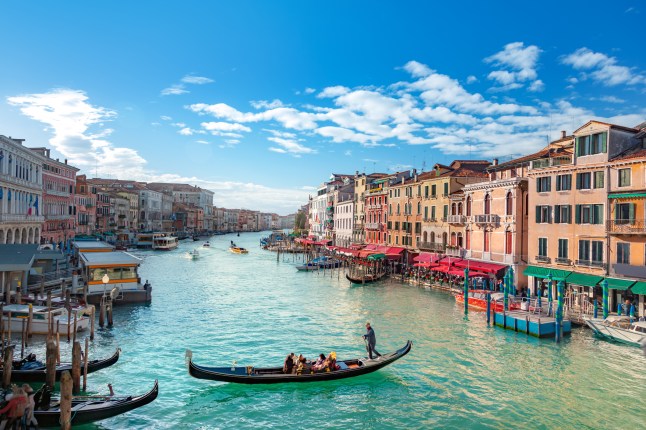
Venice is doubling down on its entry fee for day trippers in 2025, following a trial run period last year that ‘slightly’ reduced crowds.
The city’s authorities confirmed on Monday that the current €5 (£4.20) fee will increase to €10 (£8.30) — but only for last-minute travellers who book less than four days in advance.
The controversial charge will cover 54 days this year, up from 29 in 2024, starting between April 18 and May 4 and then every Friday, Saturday and Sunday from May to the end of July.
Day trippers visiting between 8:30am and 4pm must pay the fee while residents and overnight guests – who already pay a separate tourist tax – are exempt.
Venice introduced the first-of-its-kind access fee last year in a bid to curb ‘hit-and-run’ tourists who flood the city for a few hours without staying overnight.
The fee is paid through the Venice Access Fee website, where tourists download a QR code to use electric turnstiles at the city’s main entry points, including the train station.
Those without a ticket face fines ranging from €50 (£41) to €300 (£250), with checks carried out at key points of entry.

Simone Venturini, the city’s tourism councillor, declared that the 2024 trial had worked.
‘The aim remains the same: create a new system to manage tourist flow and disincentivize day tripper tourism in several periods, in line with the delicate and unique nature of the city, to guarantee the respect that it merits,’ he said at the BIT tourism fair in Milan.
Mr Venturini said officials from destinations around the world had contacted Venice authorities to ask about the scheme, including those from Ibiza and Kyoto in Japan, which has been described as ‘the seventh ring of hell’ due to overtourism.
Authorities claimed a recently commissioned study found that visits in 2024 were booked ‘well in advance’ on average and a ‘slight reduction’ in the flow of day trippers.
Venice attracts roughly 30 million visitors per year. On its busiest days, up to 120,000 million pass through, far more than it can handle.
And it’s not the only Italian destination struggling with overtourism.

Last month, an activist group known as the Robin Hood Band staged protests across Italy, fighting against overtourism and the impact of platforms such as Airbnb and Vrbo.
The vigilante group has targeted cities including Rome, Florence and Naples, where locals say tourism is driving up rents and pushing out long-term residents.
Saboteurs leave behind Robin Hood-style hats and letters describing their vandalism as attacks on the rich, a nod to increasing anti-establishment activism around the world.
Residents are equally as fed up across Europe. In October last year, thousands took to the streets of Madrid to protest extortionate house prices and the impact of holiday rental sites.
Barcelona has also seen numerous demonstrations. In the summer, protestors armed with water pistols demanded ‘tourists go home’, while tens of thousands protested in the city in November demanding lower house prices.
Do you have a story to share?
Get in touch by emailing MetroLifestyleTeam@Metro.co.uk.
MORE: I ate my way around Rome – and was shocked by the Italian capital’s ‘best’ dish
MORE: Vatican altar ransacked by masked vandal in front of Catholic pilgrims
MORE: Chilling images show how 9 major cities could be submerged by water by 2100











